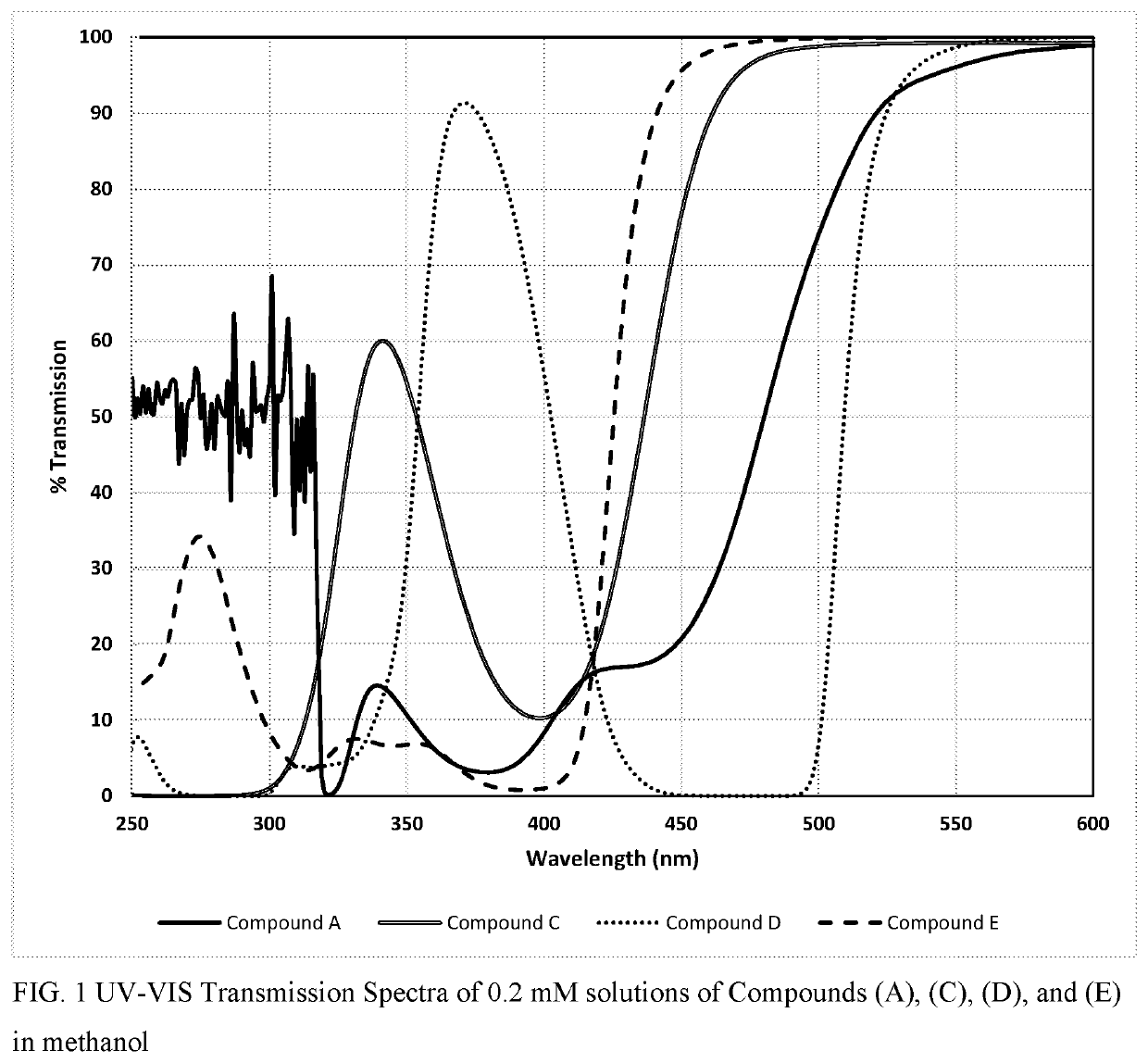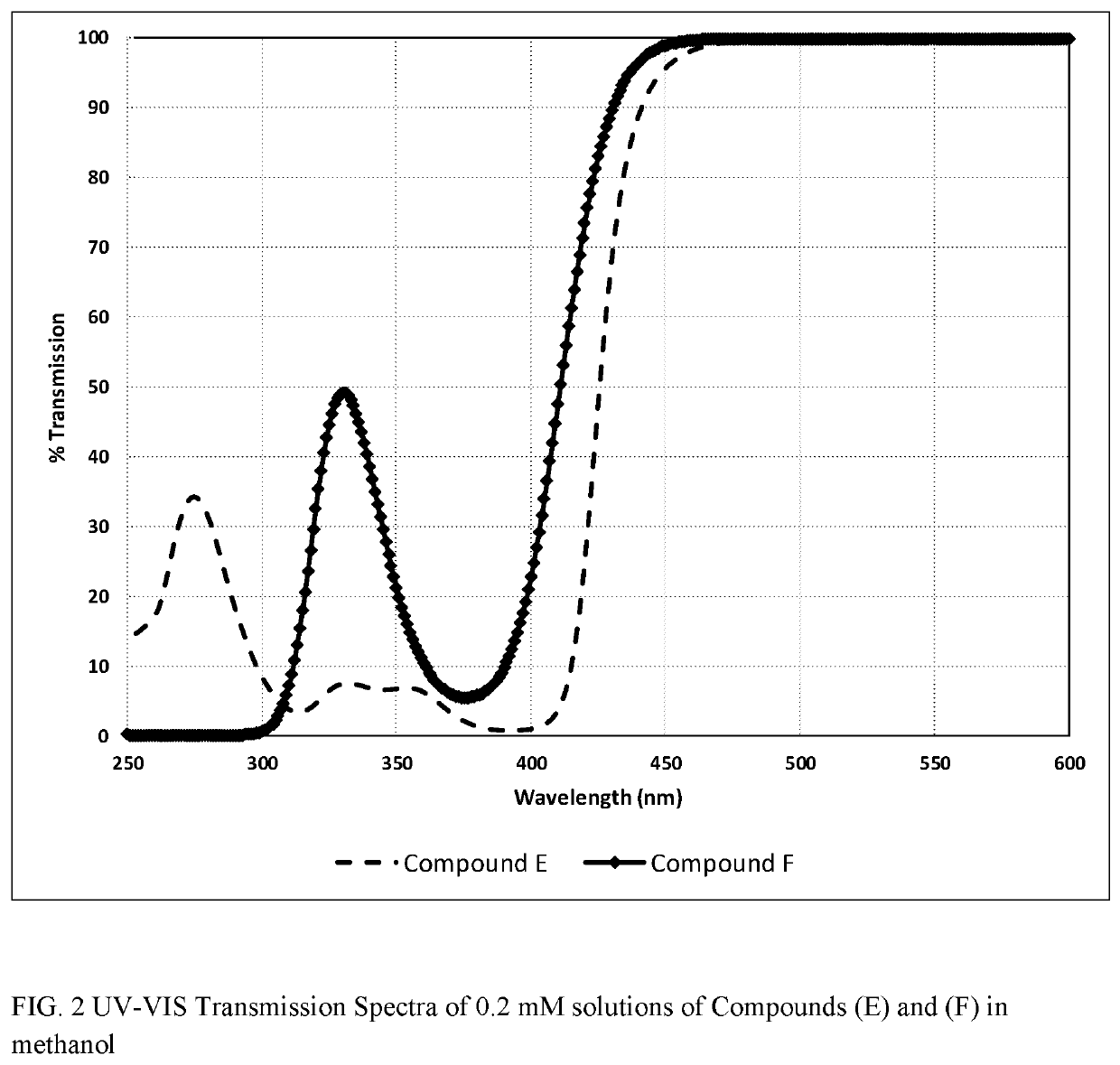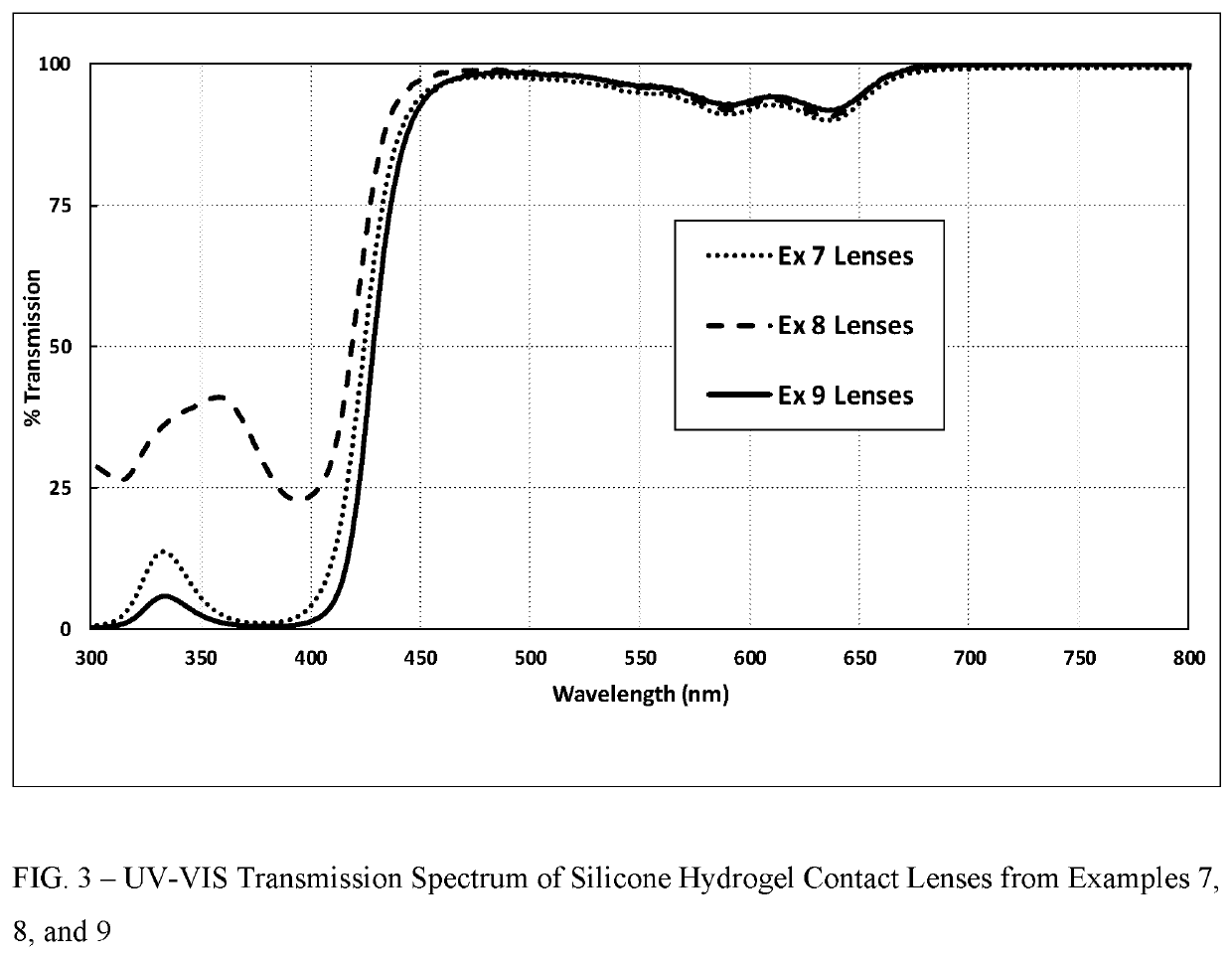Polymerizable fused tricyclic compounds as absorbers of UV and visible light
- Summary
- Abstract
- Description
- Claims
- Application Information
AI Technical Summary
Benefits of technology
Problems solved by technology
Method used
Image
Examples
example 1
of a Mixture Isomers of (E and Z)-2-(2-cyano-2-(9H-thieno[3,2-b]thiochromen-9-ylidene)acetamido)ethyl methacrylate, and (E and Z)-2-cyano-N-(2-((3-methylbuta-1,3-dien-2-yl)oxy)ethyl)-2-(4H-thieno[2,3-b]thiochromen-4-ylidene)acetamide (Compound A) as Shown in Scheme 1
[0210]
[0211]To a stirred suspension of 7.0 grams of 9H-thieno[3,2-b]thiochromen-9-one and 4H-thieno[2,3-b]thiochromen-4-one (0.032 mole) in 40 mL of anhydrous 1,2-dichloroethane under a nitrogen atmosphere, oxalyl chloride (25 grams, 3 eq.) was added in a dropwise fashion over five minutes. The mixture darkened rapidly and a gradual exotherm was observed. Once the exotherm ceased, the mixture was heated for 6 hours at 55° C. Thereafter, the system cooled down to room temperature, and the volatiles were evaporated under reduced pressure, yielding a solid. Under a nitrogen atmosphere, a solution of 7.0 grams of 2-(2-cyanoacetamido)ethyl methacrylate (˜0.036 mole) and 5.0 grams of triethylamine (excess) in 50 mL of anhydrou...
example 3
of a Mixture Isomers of (E)-2-(2-cyano-2-(2-propoxy-9H-thioxanthen-9-ylidene)acetamido)ethyl methacrylate and (Z)-2-(2-cyano-2-(2-propoxy-9H-thioxanthen-9-ylidene)acetamido)ethyl methacrylate (Compound C) as Shown in Scheme 3
[0213]
[0214]To a stirred suspension of 2.28 grams of 2-hydroxy thioxanthenone (0.01 mole) and 5.0 grams of cesium carbonate in anhydrous DMSO under a nitrogen atmosphere, 1.5 grams of 1-bromopropane (˜1.25 eq.) were added and the resulting mixture was heated overnight at 60° C. The reaction mixture cooled down and was poured into 300 mL of ethyl acetate. The organics were extracted 3 times with 300 mL of 1% aqueous sodium chloride. The volatiles were removed under reduced pressure and the crude material used “as is” for the next step.
[0215]Thionyl chloride (10 grams, 0.085 mole) was added to the crude propyl ether under a nitrogen atmosphere and the mixture was stirred for an hour at reflux. The mixture cooled to room temperature and the volatiles were evaporate...
example 4
of 3-(9-(dicyanomethylene)acridin-10(9H)-yl)propyl methacrylate (Compound D) as Shown in Scheme 4
[0217]
[0218]Acridone (3.92 grams, 0.02 mole) and 0.8 grams of 60 weight percent suspension of sodium hydride in mineral oil (0.02 mole) were stirred in 20 mL of anhydrous N,N-dimethylformamide under a nitrogen atmosphere. Once the hydrogen gas evolution ceased, 3.9 grams of 2-(3-chloropropoxy)tetrahydro-2H-pyran (˜1.1 eq.) were added to the flask, followed by 250 mg of sodium iodide and the mixture was heated in a mantle set-up to 90° C. overnight. The system cooled to room temperature, and the mixture was poured into water and stirred for 15 minutes. The resulting solids were filtered, and the filter cake was washed with dichloromethane to remove most of the unreacted acridone. The filtrate was concentrated under reduced pressure. The residue was dissolved in 200 mL of methanol, 200 mg of p-toluenesulfonic acid was added, and the resulting mixture stirred at room temperature. The deprot...
PUM
| Property | Measurement | Unit |
|---|---|---|
| Mass | aaaaa | aaaaa |
| Angle | aaaaa | aaaaa |
| Percent by mass | aaaaa | aaaaa |
Abstract
Description
Claims
Application Information
 Login to View More
Login to View More - R&D
- Intellectual Property
- Life Sciences
- Materials
- Tech Scout
- Unparalleled Data Quality
- Higher Quality Content
- 60% Fewer Hallucinations
Browse by: Latest US Patents, China's latest patents, Technical Efficacy Thesaurus, Application Domain, Technology Topic, Popular Technical Reports.
© 2025 PatSnap. All rights reserved.Legal|Privacy policy|Modern Slavery Act Transparency Statement|Sitemap|About US| Contact US: help@patsnap.com



